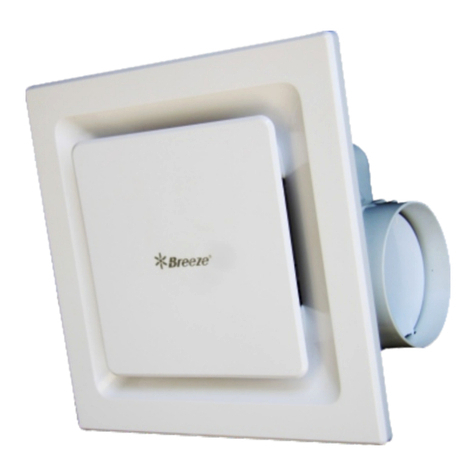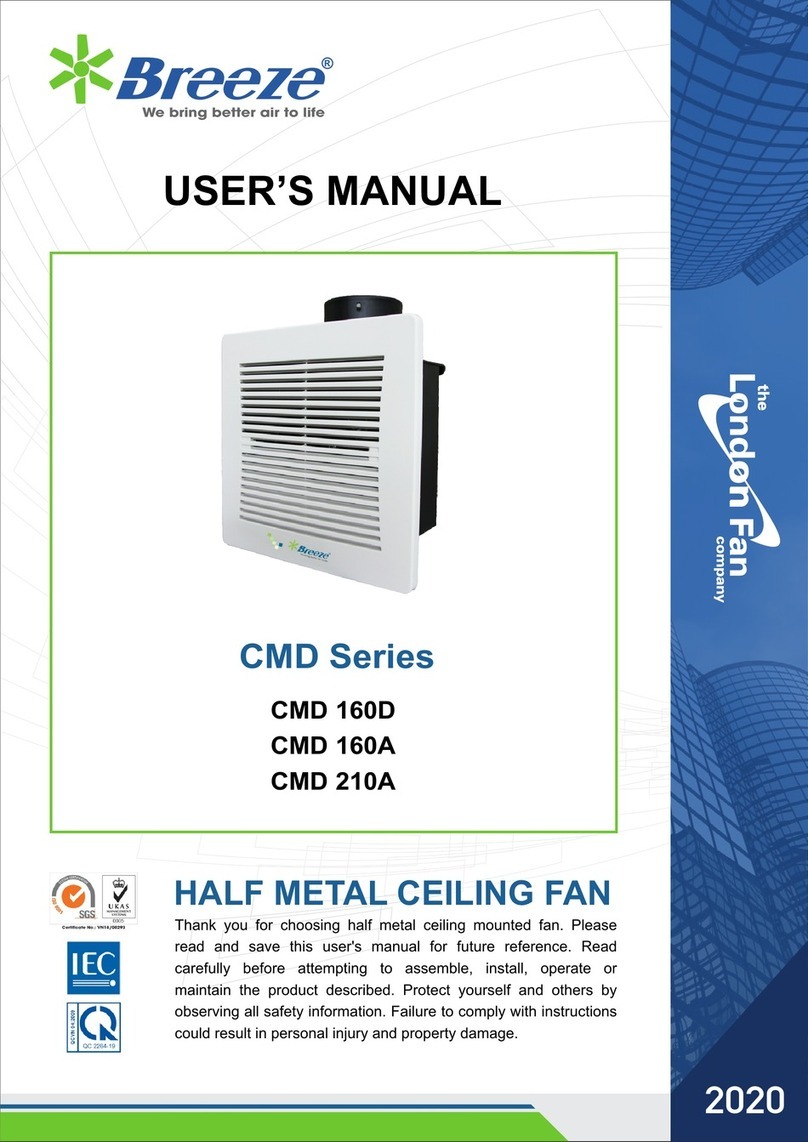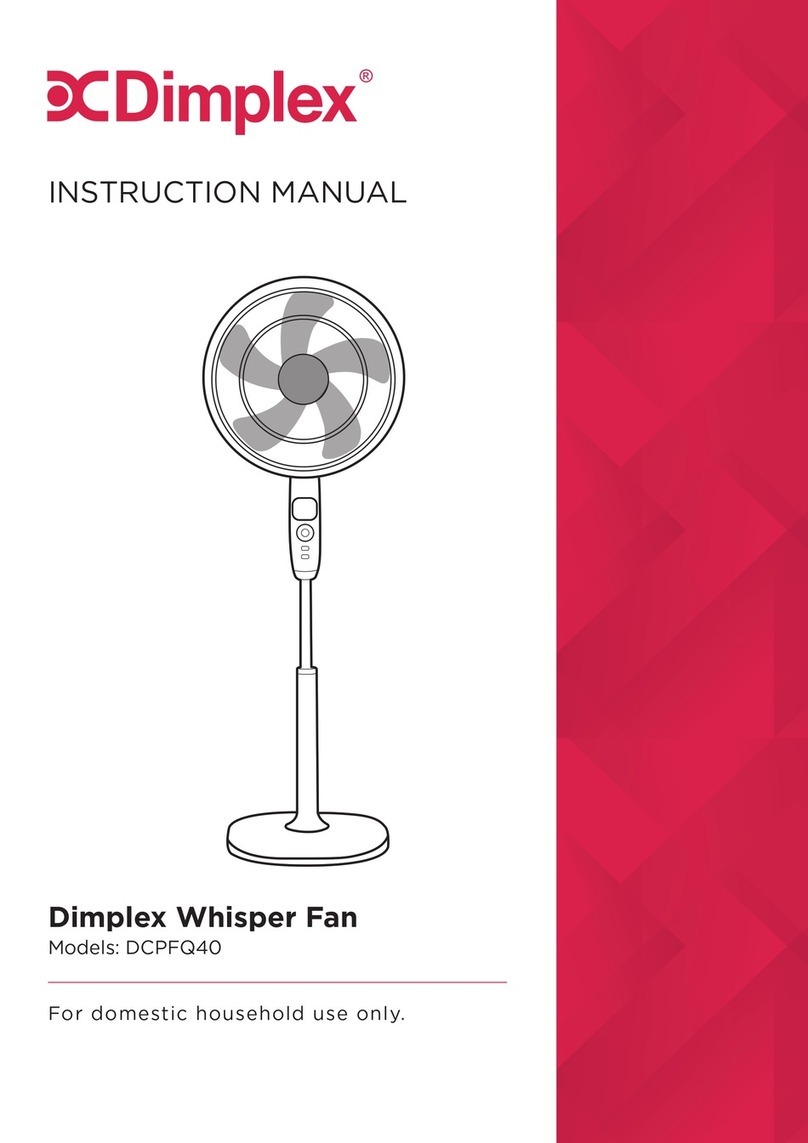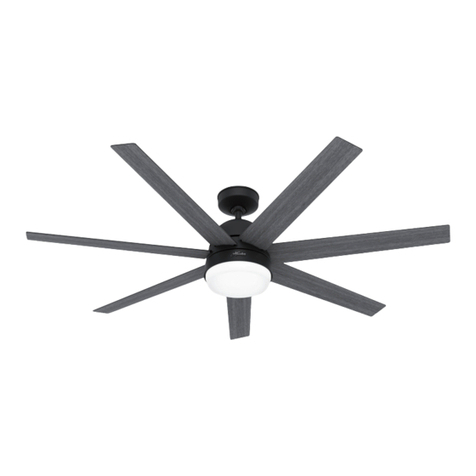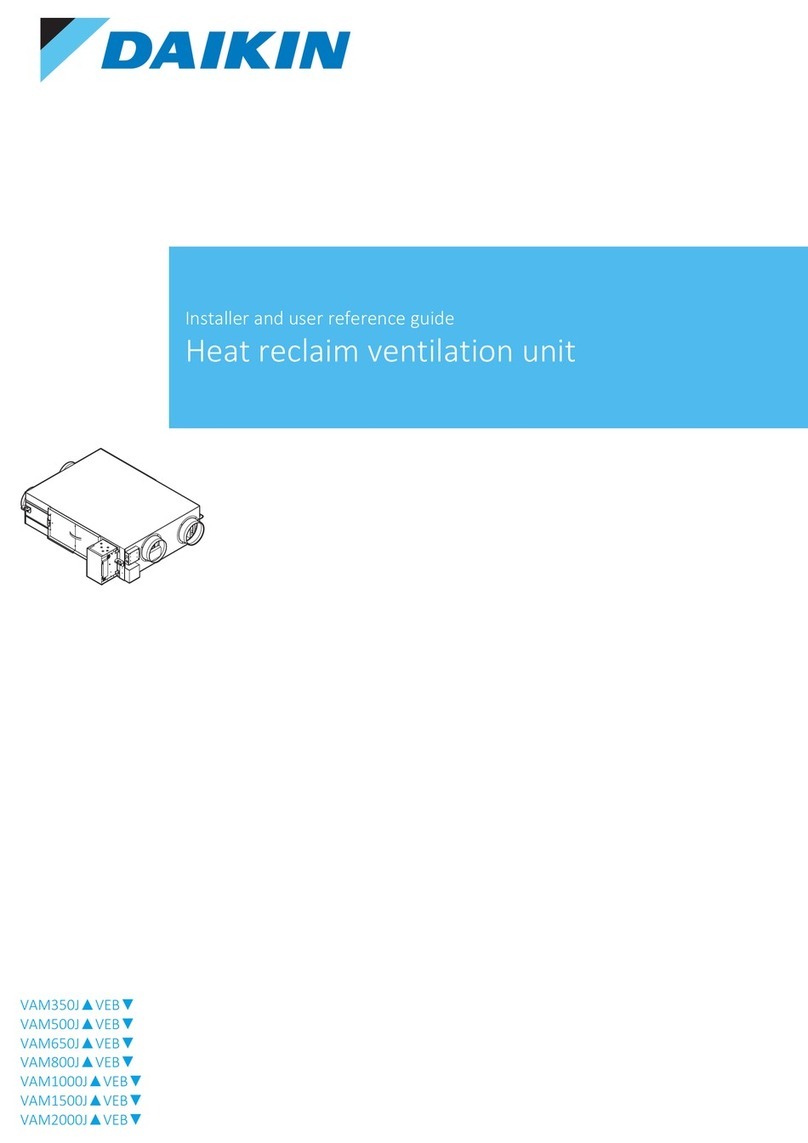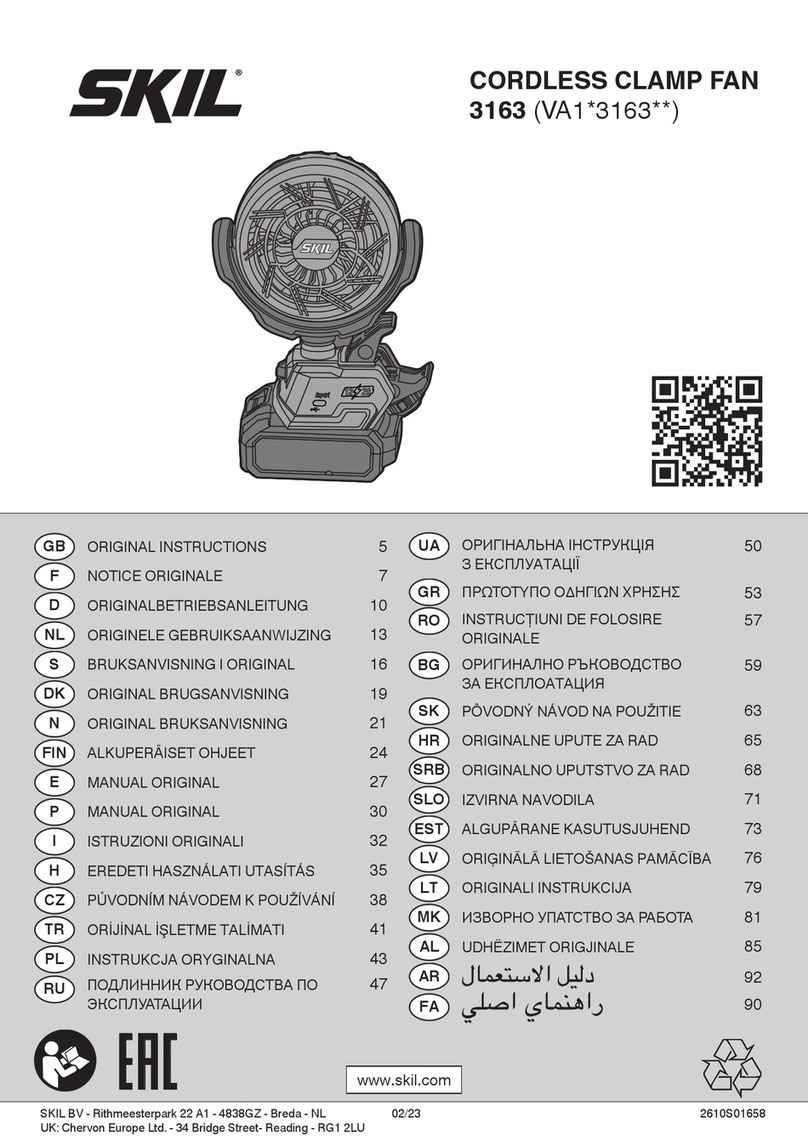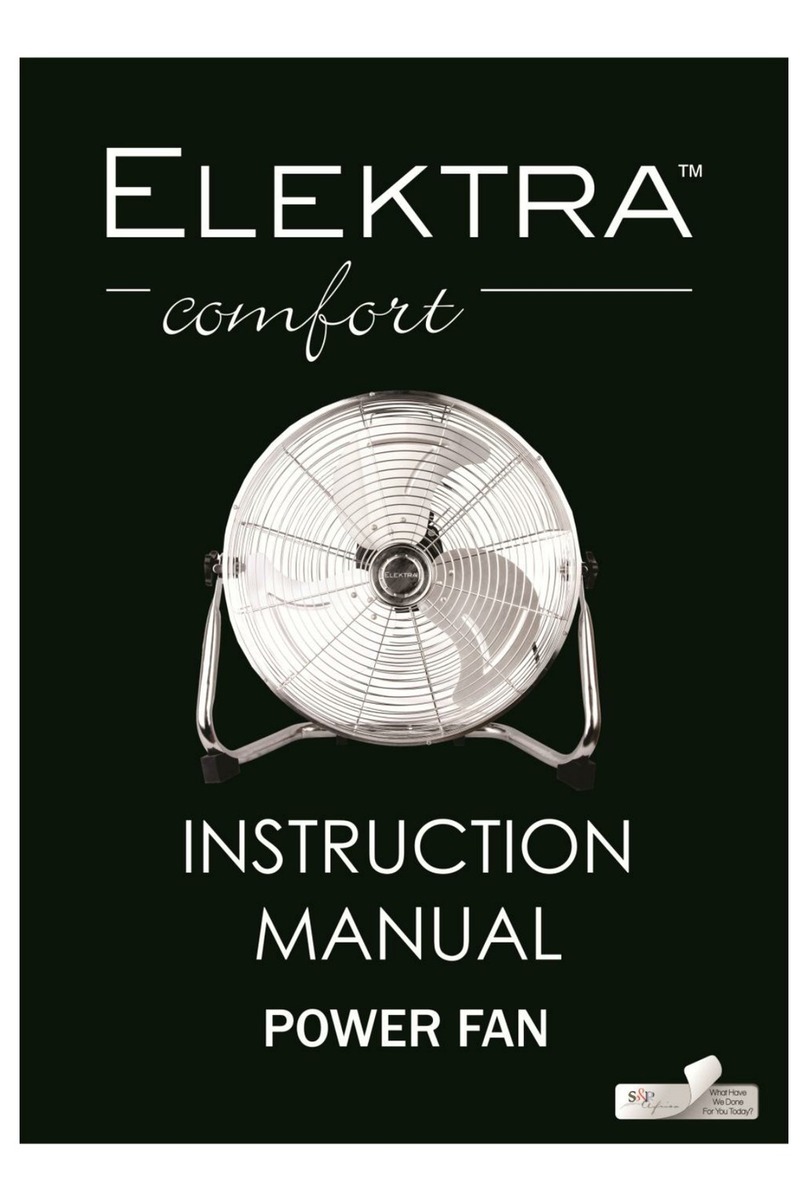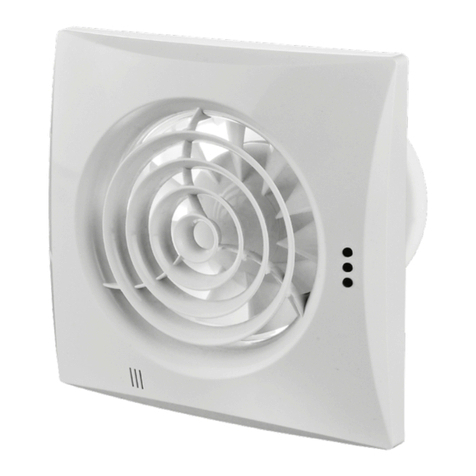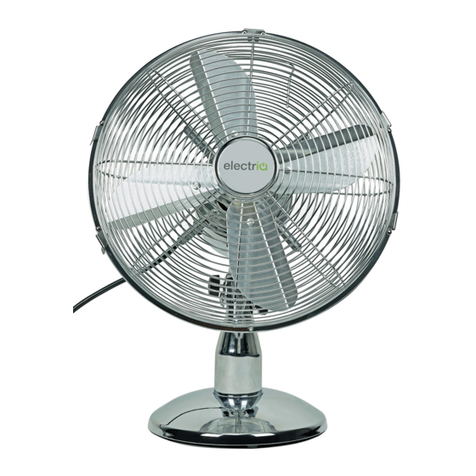Breeze KBB Series User manual

We bring better air to life
2020
USER’S MANUAL
KBB/KBP SERIES
KBB/KBF-F/KBF SERIES
Thank you for choosing cabinet fan. Please read and save this
user's manual for future reference. Read carefully before attempting
to assemble, install, operate or maintain the product described.
Protect yourself and others by observing all safety information.
Failure to comply with instructions could result in personal injury
and property damage.
KBB Series
KBB/KBF-F Series KBF Series
KBP Series
FORWARD | BACKWARD CURVE
CABINET FAN

We bring better air to life
USER’S MANUAL
FCS-FCD | BCS-BCD SERIES
The fans of the KBB/KBB-F and KBF-KBF-F series for belt drive are produced in accordance with the latest technical standards and
our quality assurance programme which includes material and function tests ensures that the final product is of a high quality and
durability. Never the less these fans can be dangerous if they are not used and installed correctly, according to the instructions.
1. GENERAL SAFETY INFORMATION
• Only approved, qualified personnel familiar with the assessment of hazards and risks associated with fans
and with the use of tools and test equipment required to service such fans, should install, operate and
maintain the product. Improper installation can result in electric shock, possible injury due to coming in contact
with moving parts, as well as other potential hazards.
• Before installing, operating and maintenance this fan please read this instructions carefully!
• If the installer or user is unable to understand the information in this manual or has any doubt that a safe and
reliable installation, operation and maintenance of the equipment can be assured, Breeze limited should be
contacted for advice.
• Warnings and safety information relevant to specific operations are contained at the start of the sections to
which they apply.
• When fans are retained in storage, access by unauthorised persons must be prevented with the use of
guards, barriers or secure premises such that fan impellers which may be rotating do not present a hazard.
• Follow all local electrical and safety codes, as well as the National Electrical Code, the National Fire
Protection Agency, where applicable.
• The rotation of the impeller is critical. It must be free to rotate without striking or rubbing any stationary
objects.
• Motor must be securely and adequately grounded.
• The fan' speed is changed, the motor current should be checked to make sure it is not exceeding the motor
nameplate amps.
• Do not allow the power cable to kink or come in contact with oil, grease, hot surfaces or chemicals. Replace
cord immediately if damaged.
• Verify that the power source is compatible with the equipment.
• Only operate the fan in its enclosed state or with properly assembled protective anti-intrusion fittings or with
protective screens.
• The fan must be operated only in accordance with the performance data and the approved medium passing
through.
• Never open access doors to a duct while the fan is running.
• Always disconnect power before working on or near a fan. Lock and tag the disconnect switch or breaker to
prevent accidental power up. Failure to disconnect power source can result in fire, shock or serious injury.
ATTENTION!
DANGER
CAUTION
• When servicing the fan, motor may be hot enough to cause pain or injury. Allow motor to cool before servicing.
• Precaution should be taken in explosive atmospheres.
2. PRODUCT OVERVIEW
The series of cabinet fans with double curve forward/ backward s were developed with KBB/KBB-F and KBF-KBF-F impeller
advanced technologies. They are designed to bear the BS and ISO standard for air performance, sound, and efficiency which are
equivalent to AMCA and DIN standard.
2.1 Construction.
Breeze Cabinet fans are designed and developed on the basis of advanced technology from United Kingdom. It has the features of
high efficiency, low noise, excellent performance, easy installation and so on. The belt drive allows for higher speeds of the impeller
and thus higher volumetric flows with a compact structure size. All fans are statically and dynamically balanced at the factory.

www.breeze.com.vn | [email protected]
We bring better air to life
02
1. Alu Cabinet Frame
2. Plates Steel
3. Inlet Flange
4. Outlet Flange
5. Cabinet Base
6. Centrifugal Casing
7. Fan Base
8. Double Impeller Centrifugal
9. Motor Power
10. Motor Support
11. Terminal Electric Box
12. Vibration
USER’S MANUAL
CDF/CDFS SERIES
The cabinet fans consists of the following main parts:
Cabinet fans with standard motor are suitable for ventilation of
• Clean air
• Slightly dusty and greasy air
• Slightly aggressive gases and vapour
• Mediums up to an atmospheric density of 1.2 kg/m3
• Mediums with a temperature of -20°c up to +40°c
• Mediums up to a max. Humidity of 85%
• The ambient temperature of the motor must be between -20°c and +40°c make sure and adhere to the specifications of the
motor manufacturer.
2.2 Product Description
Fan type:
ŸKBF series: Forward curve double inlet cabinet centrifugal fan.
ŸKBB series: High efficiency, backward curve double inlet cabinet centrifugal fan.
ŸKBP series: High efficiency, backward curve single inlet cabinet plug fan.
Fan size:
ŸKBF Series: 200mm to 1000mm
ŸKBB Series: 200mm to 1250mm
ŸKBP Series: 250mm to 1000mm
Material:
• Cabinet frame: Aluminum frame, easy to be installed, strong structure and low weight high quality painted steel plate and cold
rolled steel painted with static electronic process can prolong fan life.
• Casing: Made of hot galvanized steel.
• Impeller: All the impellers are designed highest peripheral speed and high efficiency.
o The forward curve impeller of KBF is made of hot galvanized steel.
o The backward curve impeller of KBB/KBP is made of mild steel, they are welded and epoxy painting.
o All the impellers are statically and dynamically balanced to ISO 1940 with G2.5mm/s quality standard.
• Motor: Motors incorporated are TEFC (Total Enclosed Fan Cooled) and airstream rated to IEC 34-1.
• Standard motors are protected to IP54, class F insulation.
Frame:
• Channel steel base, not easy to be deformed. Aluminum frame, easy to be installed, strong structure and low weight high quality
painted steel plate and cold rolled steel painted with static electronic process can prolong fan life. Fine seam disposition. Low air
leakage. The box board is made of foaming technology and sound insulation cotton.
Scientific cabinet design:
• Save every possible space. Confirm strict tolerance of the parts to meet the precision.
• Save every possible space to broaden inlet size which introduces the airstream smoothly.
• Motor position and belt length have been arranged without any redundancy.
• High quality parts with high reliability.
• Human oriented design concept benefits the maintenance work.
• Access door designed in both sides and can be opened tool free.

03
www.breeze.com.vn | [email protected]
We bring better air to life
USER’S MANUAL
CDF/CDFS SERIES
KBF/KBB Series: Inside Motor
All dimensions in mm.
Inlet Airflow
G1xG2
G3xG4
A
L
Model A B C D E G1 G2 G3 G4 L L1 Od
KB 200 960 990 625 50 690 256 256 453 568 600 850 15
KB 225 1000 1020 670 50 720 288 288 498 598 650 880 15
KB 250 1050 1050 710 50 750 322 322 538 628 680 910 15
KB 280 1120 1100 813 63 800 361 361 628 678 720 960 15
KB 315 1250 1270 878 63 970 404 404 673 828 850 1130 15
KB 355 1300 1350 953 63 1050 453 453 748 908 930 1210 15
KB 400 1480 1560 1130 80 1260 507 507 908 1118 1060 1420 15
KB 450 1550 1630 1220 80 1330 569 569 998 1188 1100 1470 15
KB 500 1600 1800 1310 80 1400 638 638 1258 1088 1160 1600 15
KB 560 1750 1850 1460 100 1450 715 715 1308 1218 1300 1650 18
KB 630 1880 2000 1590 100 1600 801 801 1458 1348 1320 1794 18
KB 710 2100 2200 1685 100 1800 898 898 1420 1635 1400 2000 18
KB 800 2280 2400 1855 100 2010 1007 1007 1848 1593 1600 2200 18
KB 900 2500 2600 2180 100 2210 1130 1130 2048 1793 1700 2400 18
KB 1000 2650 2750 2210 100 2360 1267 1267 2198 1948 1900 2550 18
D
8-Od
B
L1
C
E
4-O30
3. DIMENSION INFORMATION
* Dimensions shown are approximate only. The details please contact local sales office for more information.

04
www.breeze.com.vn | [email protected]
We bring better air to life
USER’S MANUAL
CDF/CDFS SERIES
B
L1 4-O30
8-O17
C
D
L
G1xG2
G3xG4
Airflow
Inlet
A
Model A B C D L L1 G1xG2 G3xG4
Y80 Y90 Y100 Y112 Y132 Y160 Y180 Y200 Y225
KB 200 610 790 860 540 498 690 256 428x328
KB 225 660 850 900 925 580 543 750 288 465x405
KB 250 710 910 940 960 630 593 810 322 525x455
KB 280 780 980 1020 1040 1070 703 663 880 361 595x515
KB 315 670 1060 1080 1100 1130 1160 1200 1295 763 420 960 404 655x555
KB 355 740 1160 1160 1180 1220 1250 1280 1380 1420 843 488 1060 453 755x635
KB 400 810 1260 1280 1300 1330 1380 1470 1520 930 513 1160 507 855x708
KB 450 890 1400 1360 1400 1430 1480 1570 1610 1660 1030 581 1300 569 978x808
KB 500 960 1520 1460 1500 1520 1570 1650 1700 1750 1120 650 1420 639 1095x895
KB 560 1060 1680 1600 1640 1660 1710 1800 1850 1900 1265 745 1580 715 1235x1020
KB 630 1160 1830 1760 1790 1830 1930 1970 2030 1390 846 1730 801 1385x1145
KB 710 1300 2020 1930 1970 2060 2110 2160 2210 1530 902 1920 898 1555x1265
KB 800 1430 2220 2140 2230 2270 2330 2380 1700 1030 2120 1007 1955x1435
KB 900 1610 2450 2290 2380 2425 2480 2535 1850 1166 2350 1130 1985x1585
KB 1000 1740 2700 2450 2540 2590 2640 2690 2010 1302 2600 1267 2235x1745
KBF-F/KBB-F Series: External Motor
* Dimensions shown are approximate only. The details please contact local sales office for more information.
All dimensions in mm.

04
www.breeze.com.vn | [email protected]
We bring better air to life
USER’S MANUAL
CDF/CDFS SERIES
Model A B C D EF G1 H L L1 Od
KBP 250 582 790 563 500 500 500 380 135 360 660 14
KBP 280 612 820 593 530 530 530 408 135 370 690 14
KBP 315 682 890 663 600 600 600 478 135 440 760 14
KBP 355 702 910 683 630 630 630 790 135 460 780 14
KBP 400 755 970 743 680 680 680 538 138 505 840 14
KBP 450 855 1080 860 780 780 780 638 155 590 940 14
KBP 500 975 1200 980 900 900 900 758 155 710 1060 14
KBP 560 1035 1260 1040 960 960 960 810 160 770 1120 14
KBP 630 1085 1310 1090 1010 1010 1010 868 160 810 1170 14
KBP 710 1205 1430 1230 1130 1130 1130 968 190 850 1290 14
KBP 800 1325 1550 1350 1250 1250 1250 1088 190 930 1410 14
KBP 900 1472 1700 1500 1400 1400 1400 1238 190 1060 1560 18
KBP 1000 1625 1850 1650 1550 1550 1550 1388 190 1150 1710 18
8-Od
C
D
B
L1
E
G1
L
A
F
Airflow
Inlet
KBP Series
* Dimensions shown are approximate only. The details please contact local sales office for more information.
All dimensions in mm.

We bring better air to life
USER’S MANUAL
FCS-FCD | BCS-BCD SERIES
08
4.1 Installation Guideliness
R
o
t
a
t
i
o
n
R
o
t
a
t
i
o
n
R
o
t
a
t
i
o
n
R
o
t
a
t
i
o
n
Once fan
impeller diameters
INCORRECT
Ducted Inlet Installations:
Ducted Outlet Installations:
Inlet Duct Turns - Installation of a duct turn or elbow too close to the fan inlet reduces fan performance because air is loaded
unevenly into the fan . To achieve full fan performance, there should be at least one fan diameters between the turn impeller impeller
or elbow and the fan inlet.
Discharge Duct Turns- Duct turns located near the fan discharge should always be in the direction of the fan rotation. Fan
performance is reduced when duct turns are made immediately o ffthe fan discharge. To achieve cataloged fan performance there
should be at least one equivalent duct diameters of straight ductwork between the fan discharge and any duct turns.
Length of Straight Duct
CORRECT
Turning
Vanes
CORRECT
INCORRECT
Inlet Spin - Inlet spin is a frequent cause of reduced fan performance. The change in fan performance is a function of the intensity of
spin and not easily defined. The best solution is proper duct design and airflow patterns. Turning vanes reduce the effects of inlet
spin.
CORRECT
Turning
Vanes
INCORRECT
01 fan
impeller
diameter
Single Fan Installation
Non-Ducted Installations:
Inlet Clearance - Installation of a fan with an open inlet too
close to a wall or bulkhead will cause reduced fan performance.
It is desirable to have a minimum of three-fourths of a impeller
diameter between the fan inlet and the wall.
Free Discharge - Free or abrupt discharge into a plenum
results in a reduction in fan performance. The effect of
discharge static regain is not realized.
4. INSTALLATION INSTRUCTION
•Move the fan to the desired location.
• Check and tighten fasteners throughout the unit and then fasten securely through mounting holes provided in the base angles.
• The unit must be set level (shimming may be necessary).
• Flexible duct connections and vibration isolators should be used where noise is a factor.
• The motor voltage and ampere rating must be checked for compatibility with the electrical supply prior to final electrical connection.
• Supply wiring to the fan must be properly fused, and conform to local and national electrical codes.
www.breeze.com.vn | [email protected]

We bring better air to life
USER’S MANUAL
FCS-FCD | BCS-BCD SERIES
09
www.breeze.com.vn | [email protected]
4.2 Guideliness for Noise Control
ŸEnsure transitions close to attenuators are
gradual or better still, remote.
ŸAbrupt transitions immediately adjacent to an
attenuator will cause the attenuator pressure
to increase.
Volume Control Dampers:
ŸAllow for a settling duct between volume
control dampers and attenuators.
ŸDon't site volume control dampers or fittings
too close to attenuators as they can cause a
dramatic increase in attenuator pressure
drop.
Attenuators in relation to bends:
ŸDo ensure attenuator splitters are in the
plane of the bend as shown. Fit turning
vanes it R/W<1.0
ŸDon't use attenuator splitters as shown when
sited close to a bend as the pressure loss
across it will be greater than expected.
Transitions: Ensure symmetrical transitions
from the duct equipment to fan inlet.
CORRECT INCORRECT
Volume control damper
CORRECT
Volume control damper
INCORRECT
CORRECT INCORRECT
ŸPlace a concrete sleeve around the silencer
to increase the acoustic seal between rooms.
For less stringent requirements, pack around
the silencer with a resilient material to affect
a complete seal between the attenuator and
the opening.
ŸWhen trying to achieve very high attenuation
or very low noise levels (e.g. NR20) do not
use an inadequate seal between the silencer
and wall opening.
Isolated walls:
ŸDo fix the silencer to one wall only and place
a flexible or resilient seal on the isolated wall.
ŸDon't bridge the isolated wall to the non-
isolated wall with the silencer fixings.
Acoustic sealing of silencers to achieve
low noise levels:
Flexible or
resillient seat
Isolated wall
Isolated wall
CORRECT
CORRECT
INCORRECT
INCORRECT

We bring better air to life
USER’S MANUAL
FCS-FCD | BCS-BCD SERIES
10
www.breeze.com.vn | [email protected]
Louvres on silencer discharge:
o
ŸDo ensure that the splitter orientation is at 90
to the louver orientation and place a spacer
between the silencer and discharge louver.
ŸDon't place a silencer immediately in front of a
louver.
CORRECT INCORRECT
ŸDo place a spacer between the louver and
the silencer and ensure that the splitter
o
orientation is at 90 to the louver orientation.
ŸDon't place a silencer immediately
downstream of a louver.
Fan positions relative to noise sensitive areas:
ŸBest: If fan cannot be relocated, wrap fan
and surrounding ductwork with a noise
barrier material (When wrapping fans pay
particular attention to ensuring there are no
holes at the joins). Allow sufficient overlap in
the wrap to ensure adequate coverage.
Remember that flexible connections will be
the weakest link.
ŸDo not place fans in ceiling spaces directly
above noise sensitive areas.
Flanking transmission:
ŸInstalling the attenuator through or against
the wall minimises the chance of flanking
transmission via the duct system ensuring
the expected performance is achieved.
ŸIf an attenuator is installed as shown, noise
from the fan can bypass the attenuator and
enter the conditioned space. This is known
as flanking transmission and will negatively
impact on the expected attenuator
performance.
Louvers on silencer inlet:
Better
Storeroom
Best
Better: Do place fans in ceiling spaces
away from noise sensitive areas
Overlap wrap by
100mm at all joins
Attenuator Attenuator
CORRECT INCORRECT
ŸDo use sweeping bends and take offs. Use
long chord turning vanes where possible.
Keep velocities low to reduce airflow
generated noise levels.
ŸDon't use sharp bends or take offs.
Changing direction of airflow:
ŸDo ensure velocities through supply and exhaust
grilled are low by increasing the grille size or
number of grilles. Size ductwork for constant static
pressure to each grille, thus eliminating or
minimissing the need for balancing damper
adjustment (which could / can generate excessive
noise).
ŸDon't allow high velocity air to pass through grilles.
When noise generated by grilles could
cause a problem:
CORRECT INCORRECT
CORRECT INCORRECT
CORRECT INCORRECT
CORRECT INCORRECT
Flanking
Transmission

05
www.breeze.com.vn | [email protected]
We bring better air to life
USER’S MANUAL
CDF/CDFS SERIES
4.3 Installation Method
Fig 01. Mounting type
Building Construction
Inlet Duct Airflow
Outlet Duct
Adjust Bolt
to reach
Spring Isolator
Flexible Connection
Fig 03. Hanging type
Building Construction
Airflow
Outlet Duct
Inlet Duct
Spring Isolator
FlexibleConnection
Steel Support
Stud
Building Construction
Spring Isolator
Fig 02. Hanging type
Stud
Steel Support

05
www.breeze.com.vn | [email protected]
We bring better air to life
USER’S MANUAL
CDF/CDFS SERIES
Vibration Isolator Installation
Operating / free height
BUILDING CONTRUCTOR
EQUIPMENT OR HANG EQUIPMENT OR HANG EQUIPMENT OR HANG
1 2 3
EQUIPMENT OR HANG
4
EQUIPMENT OR HANG
5
EQUIPMENT FOOT OR
MOUNTING BRA
TURN/ADJUST
BOLT TO REACH
1 2 3 4 5
HANGER ISOLATOR
MOUNTED ISOLATOR
Vibration Isolator Guideliness
• Choose proper isolator
• Adjust deflection based on the selected isolator.
• Maintain the operating / free height at the same level through step 2.
(The entire assembly must be levelled)
• Check all the deflection and operating/free height is properly maintained.
EQUIPMENT OR HANG
INCORRECT
EQUIPMENT OR HANG
CORRECT
EQUIPMENT OR HANG
INCORRECT
BUILDING CONTRUCTOR
EQUIPMENT OR HANG
CORRECT
EQUIPMENT OR HANG
INCORRECT
Common Sources of Vibration
1. Impeller Unbalance
2. Drive Pulley Misalignment
3. Incorrect Belt Tension
4. Bearing Misalignment
5. Mechanical Looseness
6. Faulty Belts
7. Drive Component Unbalance
8. Poor Inlet/Outlet Conditions
9. Foundation Stiffness
On start-up and during operation, the unit should operate smoothly with minimal
vibration. It is possible that a higher degree of vibration may be experienced. Excessive
vibration if left unchecked, can cause a multitude of problems, including structural and/or
component failure. The most common sources of vibration are listed.
4.4 Vibration

We bring better air to life
USER’S MANUAL
FCS-FCD | BCS-BCD SERIES
13
Aligning sheaves with a straight edge
Incorrect
Offset
Incorrect
Pigeon-Toed
Incorrect
Angle
Correct
Proper
4.6 Bearing Installation
Alignment of Pulleys and Belts
4.5 V-belt Drive Installation
• Remove the protective coating from the ends of the fan shaft and
ensure that the shaft ends are free of nick and burrs.
• Check fan and motor shafts for alignment.
• The center distance must be controlled as 0.7 (d1 + d2) < a < 2 (d1
+ d2). The belt speed of forward curve fan should be more than
10m/s, but less than 15m/s, (10 < v < 15m/s). The belt speed of
backward curve fan should be more than 25m/s, but less than
35m/s (25 < v < 35m/s).
• Slide sheaves on to the shafts, do not hammer the sheaves on to
the shafts with force as this may result in bearing damage.
• Align fan and motor sheaves with a straight edge, and tighten the
sheaves.
• Place belts over the sheaves with care. Do not bend or squeeze the
belts or it might get damaged.
• Adjust the belt tension until the belts appear snug. Run the unit for a
few minutes and allow the belts to set properly.
• Switch o ffthe fan, adjust the belt tension by moving the motor base.
When in operation, the tight side of the belts should be in a straight
line from sheave to sheave and there should be a slight bow on the
slack side.
• Check pulleys and belts for proper alignment to avoid unnecessary belt wear, noise, vibration and power loss. Motor and drive shafts
must be parallel and pulleys in line as shown in below.
• To avoid motor overheating and possible burnout, motor load amperes should always be checked and compared to nameplate
rating when fan speed is increased.
• Before installing, read bearing manufacturers’ procedures. Before putting the new bearings on the shaft, you may need to break
what is called swivel torque on the bearings (depending on type of bearing). This is done by holding the bearing housing securely
and being able to move the inner bearing race around freely.
• Apply light film of oil on shaft, then gently slide the new bearing onto the shaft.
• Align bearings on shaft with the previous scribe marks that are on the shaft and lock bearing to shaft.
• Put bolts into mounting surface and bearings. Do not tighten.
• Remove block if shaft is supported.
• Set bearings on support with the scribed marks locating the bearings. Make sure bearings are square and level with the shaft.
• Tighten bolts and torque bearing bolts, bearing set screws/locking collars as per bearing manufacturers’ procedures.
• Rotate shaft by hand to help allow the bearings to help set in. Also at this time, listen for any unusual noises such as impeller rubbing
on cone and any bearing noise.
• Connect extended lube lines in new bearings if needed.
• Reinstall the drive sheaves and belts. Check the belt alignment.
• Make sure to reinstall all guards and follow proper safety measures before starting up the fan.
www.breeze.com.vn | [email protected]

www.breeze.com.vn | [email protected]
We bring better air to life
06
USER’S MANUAL
CDF/CDFS SERIES
4.7 Electric Installation
Electric Connection
• Before electrical connections are made, the supply voltage, phase and ampere capacity must be checked for compatibility with
the fan motor. In addition, the supply wiring must be properly fused and conform to local and national electrical codes. If the unit
is supplied with a safety disconnect switch, ensure proper wiring to the fan motor.
• Be sure the disconnect is switched to the “OFF” position before connecting supply wires. If no disconnect is supplied, ensure
the supply wire is not live before connection. Supply wires are then connected to the optional safety disconnect switch
(if supplied) or motor.
• The equipment connected ground for motor protection according to the instructions - Unless the guarantee isn't accepted.
• The most frequently encountered problems are motors that are wired to rotate the impeller in the wrong direction. This is
especially true with 3-phase installations where the motor will run in either direction, depending on how it has been wired. To
reverse rotation of a 3-phase motor, interchange any two of the three electrical leads. Single phase motors can be reversed by
changing internal connections as described on the motor label or wiring diagram.
• After connecting the wiring, install the terminal cover with screws.
Wiring diagram
W2 U2 V2
W1
U1 V1
L1 L2
Voltage: 220V~240V/1P/50Hz
- Delta Connection/Low Voltage
W2 U2 V2
W1
V1
U1
L11 L12 L13
L21 L22 L23
Y - Star Connection / High Voltage
Voltage: 380V~415V/3P/50Hz
W2 U2 V2
W1
U1 V1
L1 L2 L3
Three-phase motors with cage rotor: Power >= 3.0kW
W2 U2 V2
W1
U1 V1
L1 L2 L3
Voltage: 380V~415V/3P/50Hz
- Delta Connection / Low Voltage
Power <= 2.2kW
Single-speed Motors:
Three-phase motors with cage rotor: Power >= 3.0kW
Y - / Star-Delta Connection
Double-speed Motors with connection: 06 wires.
Two Separate Windings Connection: 6P/4P (960/1440 RPM) or 8P/6P (720/960 RPM).
U1 V1 W1
W2 U2 V2
L1 L2 L3
High speed | Y - Star ConnectionLow speed | Y - Star Connection
U1 V1 W1
W2 U2 V2
L1 L2 L3

www.breeze.com.vn | [email protected]
We bring better air to life
07
USER’S MANUAL
CDF/CDFS SERIES
High speed | Delta - Connection
L1 L2 L3
U1 V1 W1
W3 U3 V3
U4 V4 W4
W2 U2 V2
Low speed | Delta - Connection
Double-speed Motors with connection: 06 wires.
L1 L2 L3
U1 V1 W1
W3
U3
V3
U4 V4 W4
W2 U2 V2
L1 L2 L3
U1 V1 W1
W3 U3 V3
U4 V4 W4
W2 U2 V2
Low speed | Y - Star Connection
U1 V1 W1
W2 U2 V2
L1 L2 L3
Dahlander Windings Connection: 4P/2P (1440/2880 RPM) or 8P/4P (720/1440 RPM)
High speed | 2Y - Star Connection
U1 V1 W1
W2 U2 V2
L1 L2 L3
Double-speed motors with connection: 12 wires
L1 L2 L3
U1 V1 W1
W3 U3 V3
U4
V4
W4
W2 U2 V2
High speed | Y - Star ConnectionLow speed Y - Star Connection |
4.1. Visual Inspection of Equipment
• The equipment type and arrangement should be verified as ordered at once when it arrives at the jobsite. When a discrepancy
is found, the local Breeze Sales Representative must be notified immediately so that corrective action may be investigated, also
verify electrical conformance to specifications. Unauthorized alterations and unauthorized backcharges will not be recognized by
Breeze Fan.
• After the unit has been assembled, installed and all utilities have been hooked up, the unit is now ready for operation.
4. OPERATION INSTRUCTION
• Switch on the fan for a short moment to check whether the direction of rotation is correct (See arrows at the fan casing).
• If incorrect, change the direction of rotation by changing the wiring. (Respect the instructions of power supply companies).
Check
Before starting the unit, check the following:
• Confirm that building supply voltage matches the voltage for which the unit is wired.
• Check all piping and wiring penetrations.
• Made by contractors for water tightness. All penetrations must be made watertight to prevent water damage to the unit and building.
• Rotate the fan manually to be sure that it is free to operate. Remove any dirt or debris that may have accumulated during impeller
installation.

www.breeze.com.vn | [email protected]
We bring better air to life
08
USER’S MANUAL
CDF/CDFS SERIES
4.2 Checks prior to initial start-up
Proceed with the fan's initial start-up in the following sequence:
• Check that the mechanical assembly has been carried out properly
• Remove foreign bodies located in the suction and outflow areas and in the fan space
• Check that the electrical installation has been completed in accordance with regulations
• Does the mains voltage match the motor voltage specified on the rating plate?
• Is the switchgear used suitable for the motor both with respect to the switching functions to be carried out and also to the
switching conditions and switched output of the motor?
• Is the motor protection system set correctly with regard to the motor's nominal current? The setting must be carried out in
accordance with the corresponding details contained on the motor output plate.
• Has the motor been connected correctly in accordance with the wiring diagram? The connection schematic supplied by the
motor suppliers applies for the connection of the motor. The special connection regulations are to be observed for explosion-
protected models.
• Fans with multi-speed motors should be checked on low speed during initial start-up.
• Check for unusual noise, vibration or overheating of bearings. Refer to the “Troubleshooting” section of this manual if a problem
develops.
Accident prevention:
• Protective anti-intrusion fittings, protective screens (see accessories) mounted, fan boxed in or assembled out of reach.
• If the fan is assembled for free-suction, the suction aperture must be covered by a protective screen. This is the only way that
the accident prevention regulation governing protection from contact can be deemed to have been met.
4.3 Starting up the fan for the first time.
Only put the fan into operation after it has been assembled in accordance with the regulations:
• Put the fan into operation.
• Monitor its correct function (quiet running, vibration, imbalance, power consumption, controllability) Should the required output
(volume flow or pressure increase) not be achieved by the fan, e.g. through unforeseen changes in the installation system, the
rotor fins can be adjusted up to the maximum fin settings specified both on the rating plate and in the technical documentation.
The power consumption must be re-measured in order to avoid any possible motor overload. The thermal-protection system
may be activated if the motor power consumption is too high.
• Check the bearing temperature after a lengthy period of operation. Always keep suction openings clear. Check protective
screens or protective anti-intrusion fittings for dirt and clean if necessary.
Once the unit has been put into operation, a routine maintenance schedule should be set up to accomplish the following:
• Lubrication of bearings and motor.
• Impeller, casing, bolts and set screws on the entire fan should be checked for tightness.
• Any dirt accumulation on the impeller or in the casing should be removed to prevent unbalance and possible damage.
• Inspect fan impeller and casing looking for fatigue, corrosion or wear.
4.4 Checks after initial start-up
Check the mechanical connections after initial start-up, especially the joints at the fan.
Good
Check at regular intervals and re-balance as soon as possible
Alarm
Trip
Stop immediately
0 - 4.4
4.4 - 7.1
7.1 - 11.2
11.2 - 18
18.0
11.0
18.0
Vibration Velocity Table:
ACTION VIBRATION VELOCITY
mm/s
Check at regular intervals
Clean and rebalance
• Check the fan bearing setscrews for tightness.
• Check alignment of sheaves and V-belts (See maintenance section).
• Inspect all fasteners to ensure that none have loosened during shipment.
• Check flex coupling for proper alignment and connect between motor shaft and fan shaft (direct drive).
• Check all guarding to ensure that it is securely attached and not interfering with rotating parts.
• Check all electrical connections for proper attachment.
• Check housing and ductwork, if accessible, for obstructions and foreign material that may damage the fan impeller.

www.breeze.com.vn | [email protected]
We bring better air to life
09
USER’S MANUAL
CDF/CDFS SERIES
Clean fan:
• Clean inlet cones.
• Clean impeller (if necessary dismount protection guards).
o Do not flood motor.
o Do not bend impeller, blades.
• Install protection guard.
5.2 Inspection of the belt drive
Make sure to regularly inspect the belt drive during the initial operating hours. The drive belt will have to be inspected and
retightened, if necessary after an operating period of between 0.5 and 4 hours under full load and thereafter in intervals of about 24
operating hours.
• Unscrew the protective cover of the belt
• Inspect the drive belt as shown in "Belt Drive Installation" figure. if necessary, retighten the drive belt:
o Loosen the clamping screws on the side of the motor carriage
o Tighten the belt as required by adjusting the tension screws
o Tighten the clamping screws on the motor carriage
• Reinstall the protective cover of the belt.
5. ROUTINE MAINTENANCE
• Regular maintenance is needed each year. The impeller blades require thorough cleaning once in 6 months.
• Before any maintenance work is undertaken:
o Stop fan in accordance to regulations and disconnect all poles from mains supply.
o Wait until impeller is stationary.
o Make sure that a restart is not possible.
• Use only original spare parts tested and approved by the manufacturer.
• The following safety notes must be observed when maintaining the machine.
• Replace the ball bearings of the motor whenever the grease utilization period has elapsed in accordance with the maintenance
instructions of the manufacturer.
• The technical maintenance includes periodic cleaning of the surfaces from accumulated dust and dirt.
• Use a soft dry brush or a vacuum cleaner to remove dust.
• Only use usual commercial cleaning material paying attention to the prescribed safety measures and do not use any abrasive
tools (surface protection will be destroyed).
5.1 Servicing maintenance.
• The impeller and casing are subject to natural wear and tear through the action of dust, acidic and corrosive vapours, as well as
the gases which are mixed into the conveyed flow. The type and concentration of the dust, as well as the gases and vapours,
can lead to deposits, abrasion and corrosion at the impeller and casing.
• The materials can be attacked so much by this natural wear and tear that they can no longer stand up to the demands made of
them. Deposits on the rotor, which have never been evenly distributed, lead to an imbalanced state and thus to noisy running,
which in turn can result in damage to the motor bearing. Deposits in the casing lead to a narrowing of the available cross-
sectional area or to a roughening of the casing panels and can thus have an unfavourable effect on the fan's output data.
Should the checks, the regularity of which depend on the conveyed media and other operating conditions which differ in each
individual case, only reveal slight wear and tear, then the individual parts can be cleaned in good time or replaced if necessary.
Prior to all servicing work:
• Bring the fan to a halt in the prescribed manner and completely isolate the fan from the mains supply.
• Wait until the rotor has come to a halt.
• Ensure that the machine cannot be switched on again
• Clean the fan
• Clean the suction apertures
• Clean the rotor (if necessary dismantle the protective anti-intrusion fitting)
• Do not overload the motor
• Do not bend the rotor or vanes
• Assemble the protective anti-intrusion fitting.
• Control whether installation is correct:
o Impeller must rotate free
o Annular gap between impeller and wall plate/casing must be regular.
o Checking direction of rotation is correct.
General Check:
• Too much bearing play?
• Lubricant leaking from the bearings?
• Surface protective coating damaged?
• Attention: Conveyed medium too aggressive?
• Unusual noises during operation
• Fan output still sufficient for possibly extended or shortened ducting system?

www.breeze.com.vn | [email protected]
We bring better air to life
10
USER’S MANUAL
CDF/CDFS SERIES
-1
• Shaft bearings are the most critical moving part of a fan.
Therefore, special attention should be given to keeping the
bearings clean and well lubricated. Proper lubrication provides
for reduction in friction and wear, transmission and dissipation
of heat, extended bearing life and prevention of rust.
• In order for a lubricant to fulfill these tasks, the proper grease
applied at regular intervals is required. See the recommended
bearing lubrication schedule below.
• In addition to lubricating the bearings at specified intervals,
set screws in the bearing collars should be checked for
tightness. A bearing collar which has loosened will cause
premature failure of the fan shaft. Fasteners attaching the
bearings to the drive frame should also be checked.
• Fan equipped with spheriodical roller bearing assembly in the
plummer block housing has lubrication point when the life of
the grease is expectancy.
• The bearings must be greased at regular intervals in order to
attain the maximum permissible life of the bearing under more
severe operating conditions.
• The re-lubricating interval depends on the operating
temperature, relevant operating conditions speed and the type
of grease used should be set by the operator.
Recommended bearing lubrication schedule
Relubrication schedule in months
Standard grease
Fan
RPM
Bearing bore (inches)
1/2 -1 1 1
1⁄8 - 1 ⁄25 7
1⁄8 - 1 ⁄ 8 15 3
1 ⁄16 - 2⁄16 7
2⁄16 - 3
5.4 Bearing Lubrication Schedule
5.3 Motor maintenance
• Motor maintenance is generally limited to cleaning and lubrication.
• Cleaning should be limited to exterior surfaces only.
• Removing dust and grease buildup on the motor casing assists proper motor cooling.
• Never wash-down motor with high pressure spray. Greasing of motors is only intended when fittings are provided. Many
fractional motors are permanently lubricated for life and require no further lubrication. Motors supplied with grease fittings
should be greased in accordance with the manufacturer's recommendations. When motor temperature does not exceed 104ºF
(40ºC), the grease should be replaced after 2000 hours of running time.
• Direct drive systems have extended grease lines to lubricate the motor without removal of any guarding.
Service intervals in operating hours for
Motor
Frame 2880 min 1440 min 960 and 720 min
56 20000 20000 20000
63 20000 20000 20000
71 20000 20000 20000
80 18000 20000 20000
90 16000 20000 20000
100 14000 20000 20000
112 14000 20000 20000
132 11000 20000 20000
160 20000 20000
180 20000 20000
200 18000 20000
225 18000 20000
Service intervals for motor bearings.
Motor standard.
Single speed:
2 Poles: 2880 rpm
4 Poles: 1440 rpm
6 Poles: 960 rpm
8 Poles: 720 rpm
Double speeds:
2/4 Poles: 2880/1440 rpm
4/8 Poles: 1440/720 rpm
4/6 Poles: 1440/960 rpm
6/8 Poles: 960/720 rpm
Motor bearing service intervals
• The roller bearings of the standard AC motors are basically equipped with a permanently sealed lubrication system consisting of
a high-quality, temperature-resistant, lithium-based roller bearing grease (melting point approximately 160°C). The amount of
lubricant supplied to the bearing by the motor manufacturer is sufficient for 10,000 to 20,000 operating hours.
• Unfavourable operating conditions, such as permanently lengthy operating periods, changes in bearing loads etc, require that
the motor bearings are monitored carefully. The service intervals or lubrication deadlines and amounts depend on the motor's
operating conditions, the rotary speed and size of bearing.
• As only the construction size and rotary speed of the motors are usually known, the service intervals specified in the adjacent
table should be applied. They refer to a coolant temperature of 40°C in the case of horizontal fitting (construction form B3). The
service intervals are to be put back by 1/3 in the case of vertical fitting.
-1 -1
To 25
500
750
1000
1250
1500
2000
2500
3000
3500
4000
5000
Mumber
of Shots
12
12
12
2
12
12
12
12
12
12
12
12
12
12
9
7
6
5
3
2
2
1
0.5
0.25
12
11
8
6
5
4
3
2
1
0.5
0.25
x
12
10
7
5
4
3
2
1
0.5
0.25
x
x
12
8
6
4
3
2
1
0.5
0.25
x
x
x
48 10 168

11
www.breeze.com.vn | [email protected]
We bring better air to life
USER’S MANUAL
CDF/CDFS SERIES
• The following has to be noted: If the fan is equipped with re-
lubrication tubes (nipples located on the fan casing and not at
the fan bearing), then the quantity of grease for the first re-
greasing is calculated as follows (as the empty tubes need to be
fully filled):
o Regreasing quantity (1st time) = quantity shown on
label + 20ml per meter greasing-tube.
o Aternative – if the length of the greasing-tube is
unknown – please calculate: Regreasing quantity (1st
time) = quantity shown on label + 20ml * fan diameter
in m.
• After the first greasing interval you have to use the quantity
given on the label or on the documentation supplied.
• The re-lubrication intervals can be seen from the following curve
or can be provided separately.
• Bearing type:
o Deep-groove ball bearing single-row kf = 1.1
o Cylindrical roller bearing single row kf = 3.5
o dm = average bearing diameter [mm]
o dm = (d+D)/2
o n = speed (min-1)
• The pillow block housing has lubrication point suitable for
lubricating when the bearing operating temperature exceeding
its nominal of 70 degree or the bearing is used in very dusty or
damp or high contamination environment.
Cylindrical
roller bearing
Deep groove
ball bearing
Lubrication
intervals t f [h]
-1
K n d [ min mּm ]
f m
0.2 0.3 0.5 0.7 1 1.5 2 3 5 7 10 15 20
3
100000
50000
30000
20000
10000
5000
3000
2000
1000
500
300
200
*10
Belt
Section
Force require to deflect
A belt 16mm per meter of span
Small Pulley/
Diameter (mm)
Newtonian
(N)
Kilogram
force (Kgf)
SPZ
13-20 56-95 1.3-2.0
20-25 100-140 2.0-2.5
SPA
25-35 80-132 2.5-3.6
35-45 140-200 3.6-4.6
SPB
45-65 112-224 4.6-6.6
65-85 236-315 6.6-8.7
SPC
85-150 224-335 8.7-11.7
115-150 375-560 11.7-15.3
A 10-15 80-140 1.1-1.5
B 20-30 125-200 2.0-3.1
• Impellers require very little attention when exhausting clean air, however, air heavily laden with grease or dirt will tend to
accumulate on the impeller causing unbalance. impellers exhausting dirty or grease-laden air require frequent cleaning to
assure smooth and safe operation.
• All fasteners, including set screws in the bearing collars, should be checked for tightness each time maintenance checks are
performed.
• A proper maintenance program will help preserve the performance and reliability designed into the fan.
5.6 Impeller and Fastener Maintenance
5.5 Belt Drive Maintenance
Belt tension indicator applied to mid center distance.
mm deflection per
1 meter of span
Belt Length
Center Distance
• Before tensioning the belts installed on the pulleys, mark two
thin transverse lines on the back of a belt in the middle of the
group of belts, these marks shall be as far apart as possible
while remaining together on the straight part of the belt strand.
• Tighten the belts progressively after turning them for about
one minute, several times, after each adjustment, tighten the
pulleys so that the length between the two marks is increased
by the percentage given in the following table.
• This simplified belt tensioning method will facilitate the work
done by fitters for maintenance of trapezoidal belt
transmissions when important technical data are not available.
This avoids the need to calculate the optimum tension.

We bring better air to life
USER’S MANUAL
FCS-FCD | BCS-BCD SERIES
20
www.breeze.com.vn | [email protected]
5.7 Maintenance Schedule
Routine Maintenance
Description
Every
6 Months
Every
12 Months Comments
1. Examine the airways in to the fan
guards (if fitted)
Remove and debris that may have accumulated round
the guards
2. Examine motor cooling fins Remove any material / dirt build-up between the motor
fins
3. Examine impeller for dirt build-up
or any physical damage
Remove any build-up of dirt. Ensure impeller is secure.
Replace impeller if it is damaged
4. Check condition and tautness of
fan safety support chains/harnesses
/ropes (if fitted)
Clean safety supports. Replace them if there is any
deterioration / corrosion
5. Examine and operate vibration
sensors (if fitted) and temperature
sensors (if fitted)
Check operation using built-in sensor test features or
dummy signals. Check that the fan is automatically
switched o ffor a warning indication is provided, when the
sensors / switches indicates a fault
Clean safety guards. Replace them if there are any signs
of damage
7. Check operation of anti-condensation
heaters (if fitted)
Switch o ffpower to the motor. Check that the
anti-condensation heater is energised (drawing current)
8. On ‘bifurcated’ motors remove the
impeller and inspect the packing
located behind the motor shaft-seal
retaining plate
Replace the 130mm Duramid seal if it is damaged
9. Examine the clearance between
the fan impeller blade tips and the fan
duct. Check the angle and the security
of the impeller blades
Ensure that the gap between the impeller blade ends and
the fan duct is even and adequate. If in doubt about the
gap contact Breeze Fan for advice. Ensure that the
impeller blade is secure. The blade angle must not be
changed before contacting Breeze Fan for advice
10. Check torque of fan-to-support
fixings
It is essential to confirm that all fixings are properly fitted,
are tight and are fully driven home. If in doubt about the
torque of a fixing contact Breeze Fan for advice
11. Examine motor, fan and ancillary
equipment fixings
It is essential to confirm that all fixings are properly fitted,
are tight and are fully driven home in 5.8 fixing. If in doubt
about the torque of a fixing contact Breeze Fan for advice
12. Check movement of vibration
isolators (if fitted)
Check freedom of movement. Tighten fixings if necessary
13. Check motor voltage and current
consumption
Ensure voltage and full load current are as specified on
the motor nameplate
14. Inspect paintwork / galvanising Treat any areas of damage with suitable anti-corrosion
paint
16. Check fan assembly wiring Check security and condition of all wiring
(including the earth)
x
6. Examine condition of safety guards
(if fitted) and their fixings
x
x
x
x
x
x
x
x
x
x
x
x
x
x
15. Grease motor bearings Check requirement in accordance with 5.3 motor
maintenance and 5.4 bearing lubrication schedule
x

12
www.breeze.com.vn | [email protected]
We bring better air to life
USER’S MANUAL
CDF/CDFS SERIES
FIXING ARRANGEMENT OF TERMINAL BLOCK
Terminal screw locknut
Terminal screw washer
Customers supply lead eyelet (when fitted)
Connecting links (when fitted)
Motor lead eyelet
Fixing
Torque values
M4
M5
M6
M8
M10
1.5Nm - Brass
2.7Nm - Brass
5.5Nm - Brass
10.5Nm - Brass
55.5Nm - Steel
Terminal screw
Terminal block
Identification tag
Brass washer
(Fitted with connecting links)
Terminal screw lockwasher
Important note:
This drawing shows the correct assembly sequence of terminal parts.
It is essential that no lockwashers or nuts are placed between the motor
lead eyelet, connecting link or customers supply lead eyelet (when fitted).
Packing washers
(Omit from assembly where stud
thread continues to terminal block
surface)
Do not use copper wire links
It is essential to ensure that all fixings on the fan assembly are secure. When examining and checking the security of fixings during routine
maintenance, those fixings that have locking devices fitted or are painted over, need not be disturbed if they can be seen to be secure. Any
locking devices that are disturbed during maintenance must be discarded and replaced with new identical devices.
Thread forming screws must have locking compound applied when being reused. Those fixings that have no locking devices fitted and
are not painted over, should be checked at 95% of their original setting to ensure no unnecessary disturbance of the fixing. See picture
below for torque setting details. If in doubt about the torque of a particular fixing contact Breeze Fan for advice.
Torque settings for screws
Screw Fixing
Torque setting: +0% / -10% (Nm)
M4 M5 M6 M8 M10 M12 M14 M16 M18 M20 M22 M24
Steel 8.8
Stainless Steel
A2, A4 Prop 70
Stainless Steel
A2, A4 Prop 80
3.5 7.0 12 28 55 100 155 245 335 475 645 820
2 4 7 17 33 56 90 135 190 268 365 460
3 5.5 9.5 22 43 75 120 185 255 355 485 615
Torque settings for taper hubs
Bushes
Taper Hubs
Torque
Type
Bore [mm]
Tightness [Nm]
1008 1108 1210 1310 1610 2012 2517
12,19,24 19,24,28 16,19,24,32 14,25,35 19,24,38,42 24,38,50 38,48,60
6 6 20 20 20 32 49
Base and Foot
Mount Torque
Settings
(Nm)
Motor Frame
Screw Fixing
Motor Base
D71 D80
Foot Mount
Shaft and
Fixings
D90 D100 D112 D132 D160/180 D200-315
M8 M10 M12 M12 M12 M16 M20 M24
15 15 35 55 55 135 240
50 85 85 85 180 350 450
450
Screw Fixing M6 M8 M10 M10 M12 M16 M20
Motor Frame D71/80 D90 D100 D112 D132 D160/180 D200-250
M24
D280-315
6 15 30 30 50 120 180 295
Torque Value
-
TORQUE SETTINGS FOR FIXINGS
5.8 Fixing
This manual suits for next models
30
Table of contents
Other Breeze Fan manuals
Popular Fan manuals by other brands
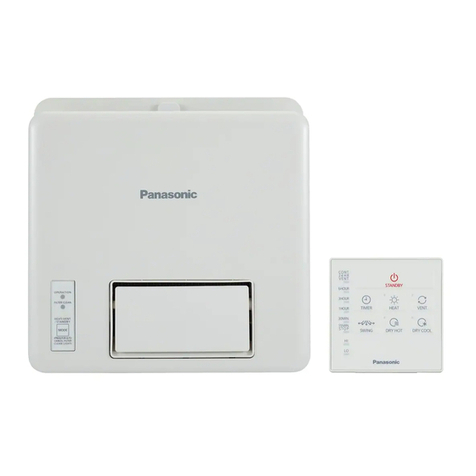
Panasonic
Panasonic FV-23BW2H Installation and operating instructions

Swann
Swann Activair SFA23010 manual

Fantask
Fantask EP23483BK operating instructions

Exhausto
Exhausto BESF Series Installation & operating manual

Shop-Vac
Shop-Vac Shop-Air 119D Series user manual
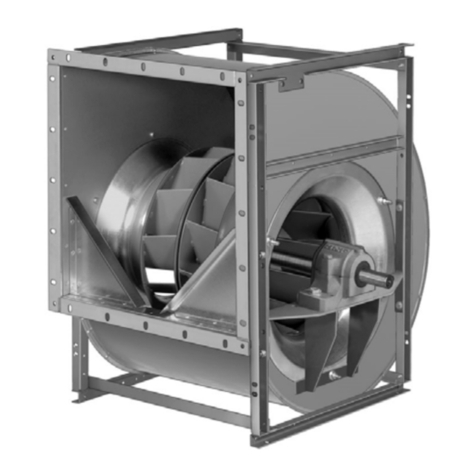
Nicotra
Nicotra RZR Series Mounting instructions


